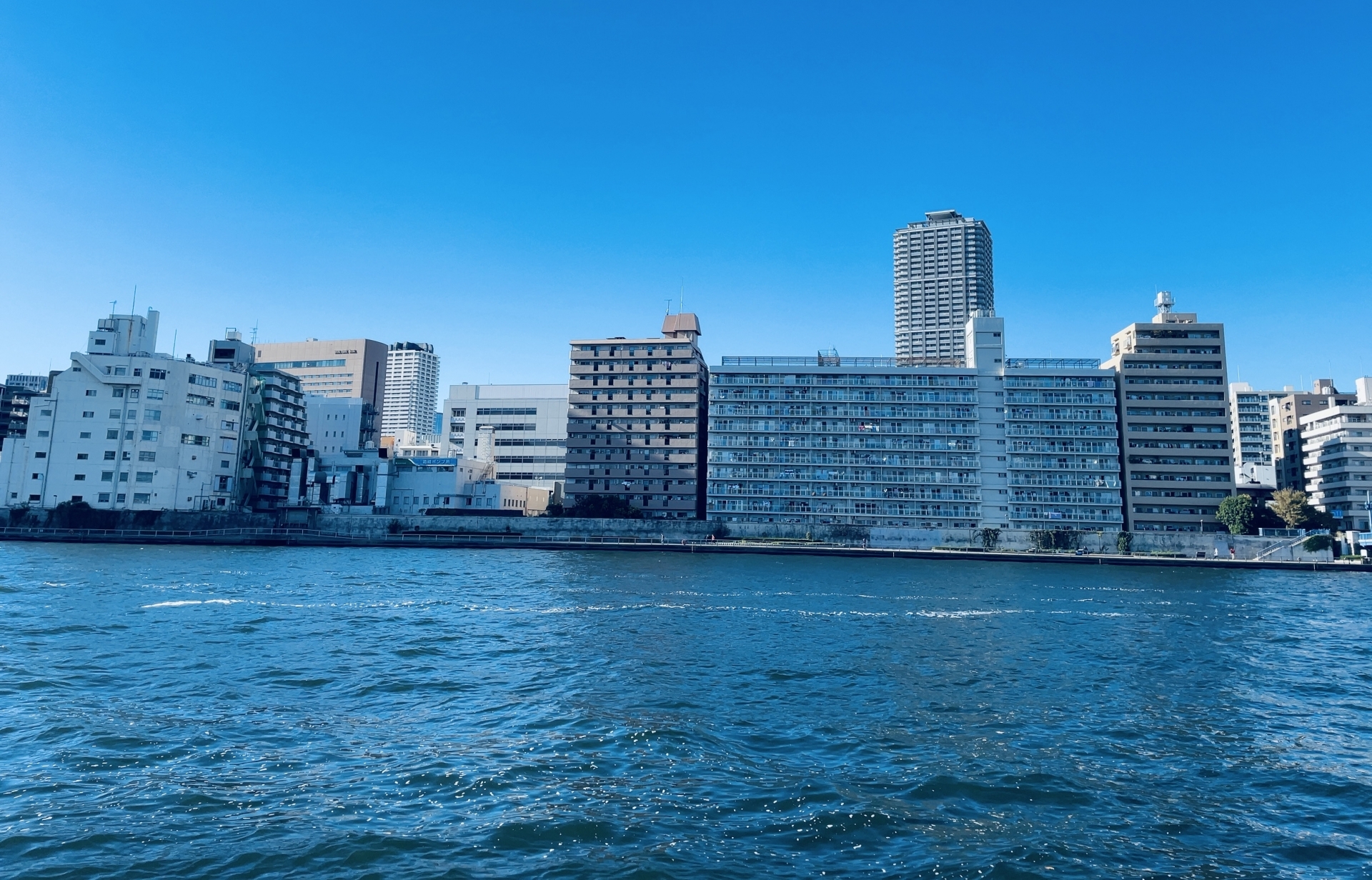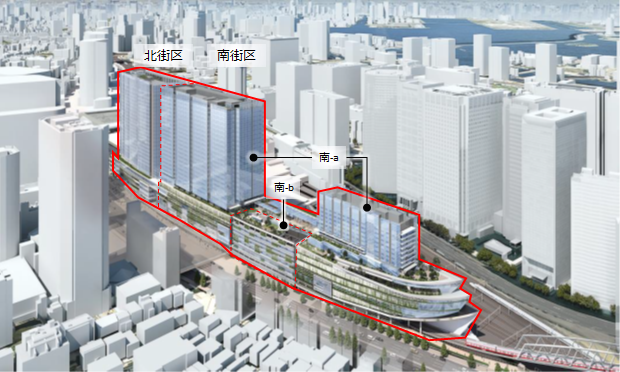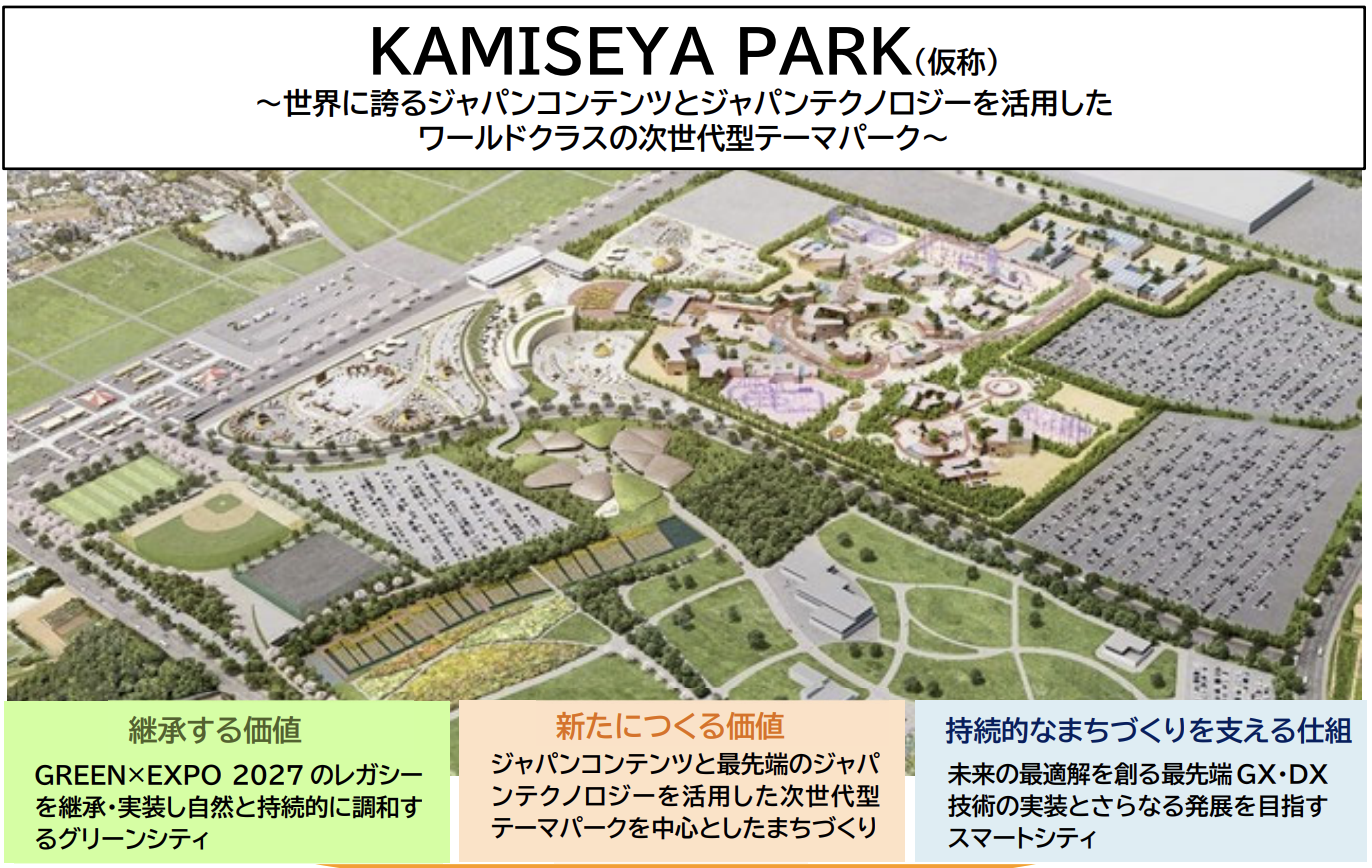The “2025 Problem” refers to the collective social challenges that will arise in 2025 when all members of Japan's baby boom generation (born between 1947 and 1949) reach the age of 75 or older. With the rapid increase in the elderly population, concerns have been raised about the growing burden on social security, including nursing care and medical expenses, as well as the decline in the working-age population. These changes are also expected to have a significant impact on the real estate market. Specifically, it is expected that there will be an increase in the number of inheritances, a decline in demand from those looking to purchase or rent housing, and an increase in vacant homes. These structural changes have led some to report extreme views that real estate prices will plummet. However, according to experts, it is unlikely that real estate prices will suddenly drop in 2025 due to population decline and aging, and instead, a gradual impact is expected over the long term. In any case, the period around 2025 could be a turning point for the real estate market, so it is important for real estate owners to carefully analyze the situation.
The mechanism of sublease contracts and problem cases in rural areas
Amid these environmental changes, real estate owners are particularly concerned about the “sublease apartment problem in 2025.” First, let's clarify the mechanism of sublease contracts (so-called “bulk leasing”). Sublease refers to a contract where a real estate management company or similar entity leases a property from the owner and subleases it to a third party. For the owner, the benefits include “no need to worry about vacancy risks and a steady rental income” and “reduced hassle of managing rentals,” making it an attractive option, especially for beginners or passive owners. However, sublease contracts also come with unique risks and issues. In reality, there have been reports across the country of cases where individuals entered into contracts based on sales pitches such as “30-year bulk lease for long-term stable income,” only to later be presented with significant rent reductions or even rent non-payment. According to the National Consumer Affairs Center of Japan, there were 1,337 consultations regarding rental housing contracts (apartment buildings and condominiums) nationwide in the 2022 fiscal year, including complaints such as “the sublease company stopped paying rent” and “I was unable to terminate the contract and was demanded a penalty fee.” In many cases, the contract stipulates that the owner cannot easily terminate the contract midway or sell the property, leading to situations where the owner is unable to move forward if they refuse to agree to a rent reduction, such as being pressured by the company to terminate the contract.
Such sublease-related disputes have become particularly prominent in rural areas with severe population decline. For example, landowners in rural areas built apartments as a tax strategy for inheritance taxes and entered into sublease contracts, but due to insufficient tenants, they were forced to lower rent guarantees, leading to financial difficulties. The Ministry of Land, Infrastructure, Transport and Tourism and the Consumer Affairs Agency have also taken notice of this issue, and the Sublease Reform Act (amendment to the Residential Tenancy Management Act) was enacted in December 2020. This law requires sublease operators to provide important information documents to tenants at the time of contract signing and prohibits misleading advertisements that make exaggerated claims or promise “long-term rent guarantees.” Despite these administrative measures, disputes related to subleasing continue to arise.
Notable cases that have garnered attention in the past include the following: One case involves the unilateral reduction of contract rent by major subleasing company Leopalace 21. Between 2018 and 2019, construction defects were discovered at numerous properties managed by Leopalace 21, leading to tenant evictions and necessary repairs. As a result, the company's operations deteriorated, and it could no longer maintain rent guarantees to property owners. This led to the company notifying property owners who had signed contracts under the slogan “up to 30-year lease guarantee” of rent reductions. Some property owners filed lawsuits, claiming that the terms were different from what was originally agreed upon. However, in most cases, the contracts included clauses allowing for rent adjustments, leaving property owners in a difficult situation. Another notable example is the “Pumpkin Carriage” incident. In this case, Smart Days Co., Ltd., a real estate company operating women-only shared housing under the “Pumpkin Carriage” brand, sold properties and entered into sublease agreements with owners, promising “30-year rent guarantees.” However, in 2018, the company went bankrupt and ceased rent payments. Many owners had taken out loans to purchase the properties, and the loss of rental income made it impossible for them to repay their loans, leading to severe financial hardship and even bankruptcy. As such, sublease contracts, regardless of location, carry risks that may differ from initial expectations, making this a critical issue for property owners.
Could the Sublease 2025 Problem Occur in the Tokyo Metropolitan Area?
Can the sublease rent reduction issue, which has primarily surfaced in rural areas, also occur in the densely populated Tokyo metropolitan area? In conclusion, my view is that it is “not something that can be ignored in the Tokyo metropolitan area.” Some sublease operators may use sales pitches like, “The Tokyo metropolitan area won't see a population decline in the future, so it's fine,” but this is a one-sided explanation. While it is true that the total population of the Tokyo metropolitan area is projected to continue growing or remaining stable at a moderate pace after 2025, and that Tokyo's population decline is not expected to begin until around 2045, assessing the stability of sublease operations requires looking at the composition of the population rather than the absolute number. The main tenants of rental housing are young adults aged 20–40, such as university students and single working professionals, and the trends in this demographic group will determine rental demand. In the case of Tokyo, while the total population is expected to be supported by an increase in the elderly population for the time being, the population of the crucial 20–40 age group is already projected to begin declining. In fact, future projections estimate that the population aged 20–49 in the Greater Tokyo Area (primarily Tokyo and the three neighboring prefectures) will decrease by approximately 12% by 2025, and a contraction in rental demand due to the decline in the young to working-age population is unavoidable even in the Tokyo metropolitan area. Furthermore, even within the Greater Tokyo Area, there are significant regional differences, with population dynamics diverging between the central and peripheral areas of Tokyo. For example, within the 23 wards of Tokyo, areas such as Chiyoda Ward, Chuo Ward, and Minato Ward in the central and waterfront areas are expected to see an increase in the young population until around 2045, but in suburban areas such as Adachi Ward and Edogawa Ward, the young population is projected to decrease by more than 15% by 2045 compared to the current level. In the Tama region of Tokyo, some cities are projected to see a decrease of 30–40%, and by 2025, only a small number of central areas will see an increase in the population aged 20–40 compared to the current level. As such, even if the total population of the Tokyo metropolitan area remains stable, changes in its demographic composition and regional disparities will inevitably lead to a decline in rental demand, making it impossible to overlook the risk of sublease rent reductions even within the metropolitan area.
Additionally, it is necessary to examine the trends in housing supply in the Tokyo metropolitan area. Since the inheritance tax reform in 2015, apartment construction for tax-saving purposes has become active even in suburban areas near the city center, leading to an increase in the supply of new rental housing. Furthermore, prior to the Tokyo Olympics (2020), redevelopment and construction booms occurred across Tokyo, causing land prices to surge, but a downturn in the market due to the backlash from this boom is also a concern. After the supply of new condominiums and apartments peaks in the mid-2020s, competition in the rental housing market is expected to intensify. In fact, while real estate prices remain high, especially in urban areas, the total number of vacant houses and the vacancy rate nationwide have reached record highs, and the trend toward an increase in vacancies is becoming more pronounced.
According to the Ministry of Internal Affairs and Communications' “Housing and Land Statistics Survey,” the number of vacant homes nationwide has increased steadily from approximately 2.76 million (vacancy rate of 7.6%) in 1978 to approximately 9 million in 2023, with a vacancy rate of 13.8%. As shown in this black line graph (trend in vacancy rates), the surplus of housing is progressing across Japan, and the notion that “one in four homes is vacant” is becoming a reality. Urban areas are no exception, with an increasing number of inherited homes remaining vacant due to population decline and the nuclear family structure, raising concerns about rising vacancy rates, including for rental properties. In the rental market, an increase in vacant units exerts downward pressure on rental rates, which may affect sublease operators and property owners in the form of lower rental levels. Older properties are particularly vulnerable to vacancy risks, and in areas where only older properties are available, the supply-demand balance is more likely to be disrupted. Against the backdrop of the aforementioned decline in rental demand (demographic trends) and excess housing supply (rising vacancy rates), the risk of deteriorating financial performance for sublease contracts is expected to increase even in the Tokyo metropolitan area.
Finally, there is a factor to watch out for around 2025. As mentioned earlier, this is the point when sublease properties contracted and constructed around 2015 will reach 10 years of age. In sublease contracts, the guaranteed rent amount is typically fixed for several years to around 10 years from the start of the contract, with rent adjustments often occurring at contract renewal. This is because the appeal of the property (its newness) begins to fade after 10 years, making it necessary to lower rents to attract tenants. At the same time, maintenance costs such as equipment repairs increase, making it a period when the profit margins originally anticipated by sublease operators are easily squeezed. As a result, it is well known within the industry that rent reduction negotiations become frequent after the 10th year. In fact, it is anticipated that around 2025, when properties reach 10 years old, rent adjustments will be implemented at this timing, and sublease operators will demand significant reductions in rent guarantee amounts. Furthermore, the previously mentioned decline in rental demand (due to the aging of the baby boomer generation and the resulting decrease in potential tenants) will exacerbate this trend, leading to even stronger pressure from operators to reduce rent. In other words, it is highly likely that the 2025 problem will also impact sublease properties in the Tokyo metropolitan area. Owners of properties built before 2015 (properties that will be over 10 years old by 2025) should pay close attention to future developments.
Measures real estate owners should take in preparation for 2025
Based on the above, we will consider specific measures that real estate owners can take to prepare for the risks associated with sublease contracts due to the 2025 issue. In a situation where future uncertainties are increasing, it is important for owners to take a proactive approach to risk management and strategic review rather than a passive one. The main points are listed below.
- Re-examine the contents of sublease agreements Owners who currently have sublease agreements should first re-examine the contents of the agreements. It is important to understand the conditions and timing for rent adjustments during the contract period, as well as the requirements for termination by the owner (such as the presence or absence of liquidated damages). Especially if the renewal period is approaching, it is recommended to understand in advance the possibility of rent reduction negotiations and the procedures involved, and consult with experts (such as real estate consultants or lawyers) if necessary. Depending on the contract terms, refusal to agree to a reduction may result in contract termination, so it is important to consider countermeasures that account for the worst-case scenario. Additionally, in case you are unable to accept the new terms proposed by the contractor, it is advisable to consider alternative plans (such as switching to a different management outsourcing method or transitioning to self-management) to ensure peace of mind. Re-confirming contract terms and gathering information is the first step for owners to prepare for risks.
- Diversifying income risks and reviewing your asset portfolio Diversifying income sources is a basic risk management strategy not only for sublease properties but for real estate investment in general. Check your asset portfolio to see if you are overly dependent on rent income from specific properties or areas. For example, if income from sublease contracts accounts for a large portion of your total rent income, a reduction greater than expected could directly affect your household finances and loan repayments. As a countermeasure, consider securing other income sources or diversifying investments across multiple smaller properties. Additionally, maintaining a balance with non-real estate assets (such as savings or securities) is important. To prevent your household finances from being destabilized by a single risk factor, consider restructuring your overall assets from a long-term perspective. When considering new real estate investments, it is important to avoid being swayed solely by the appeal of subleasing. Instead, adopt a cautious approach by carefully comparing the expected return on investment with the costs associated with subleasing fees. Also, consider the potential income that could be earned without subleasing (such as rent or security deposits that would be received in exchange for assuming the risk of vacancies), and avoid relying excessively on third-party service providers, as this can also be part of risk diversification.
- Review area and property strategies At the root of the sublease 2025 problem are structural issues such as population decline and falling demand, but the extent of their impact varies greatly depending on the region and property characteristics. Therefore, owners need to review the area characteristics and market competitiveness of their properties. If a property is located in an area where future rental demand is expected to decline (e.g., suburban areas with significant population decline or locations far from train stations), measures such as renovation or upgrading facilities to align with tenant needs can be considered to enhance competitiveness. If vacancies persist despite these efforts, it may be necessary to boldly adjust rental rates (e.g., reduce rent) to align with market demand. On the other hand, if you plan to continue real estate investment, stricter criteria for property selection are required. Whether relying on subleasing or self-management, selecting properties in areas with stable demand is the key to long-term stability. Even if initial investment costs are higher and returns are lower, there is value in focusing on well-located properties such as those near downtown stations. In fact, prime areas in urban centers have relatively stable rental demand and are relatively easy to secure tenants even during market downturns. On the other hand, in areas with severe population decline, even properties with good conditions may struggle to avoid rising vacancy rates. Update the revenue simulations for your current properties, collect information on regional population trends, the number of competing properties, and future redevelopment plans, and reassess your current area strategy. If necessary, consider replacing properties (selling and reinvesting in a different area) and implement flexible strategic adjustments with an eye toward the future.
- Consider exit strategies (sale or utilization methods) Even if you start rental operations with the intention of long-term ownership, depending on the situation, it may be necessary to make the decision to dispose of assets at the appropriate time. For sublease properties, if you determine that a deterioration in cash flow is unavoidable in the future, consider early sale or a change in utilization method. Especially when faced with a reduction in rent guarantees, one may find themselves in a situation where “revenue has deteriorated, but the contract prevents immediate termination or sale.” Before reaching this point, selling while the market environment is relatively favorable is a viable option. In recent years, specialized buyers and consultation services for sublease properties have emerged, and some companies even offer free consultations regarding sublease contracts or property sales. In addition to selling, another option is to change the property's use, such as converting it from residential to a senior care facility or shared housing, to tap into new demand (however, changing the property's use requires terminating or renegotiating the sublease contract). In any case, having an exit strategy in place in advance will enable you to make decisions that minimize losses in the event of unforeseen circumstances. From the perspective of asset succession, it is also advisable to plan ahead to avoid leaving negative assets to future generations.
Summary: The Importance of Long-Term Asset Management
The risk of deteriorating revenue from sublease contracts, which originated from the “2025 problem,” is difficult to completely avoid due to Japan's structural issues of an aging population and declining birthrate. However, there is still a good chance that the impact can be mitigated and revenue maintained even in a tough market environment through the efforts and measures taken by property owners. What is important is to avoid being swayed by short-term optimism or pessimism and to maintain a long-term perspective on protecting and growing asset value. Population and social changes may be gradual, but they are steady. The real estate rental business must alsocontinue to update its strategies in line with the times. Real estate owners will be required to draw up risk scenarios with an eye to the future, take early action, and engage insteady asset management. To this end, use the points discussed in this article as a reference to prepare for stable rental operations beyond 2025. A solid, long-term business strategy is the best risk hedge in an era of significant environmental changes.

Daisuke Inazawa
Representative Director of INA&Associates Inc. Based in Osaka, Tokyo, and Kanagawa, he is engaged in real estate sales, leasing, and management. He provides services based on his extensive experience in the real estate industry. Based on the philosophy that “human resources are a company's most important asset,” he places great importance on human resource development. He continues to take on the challenge of creating sustainable corporate value.

.png)












